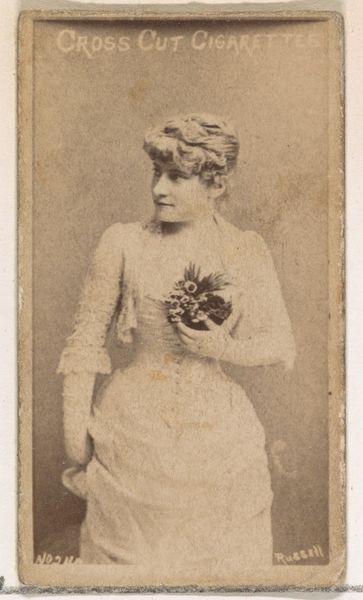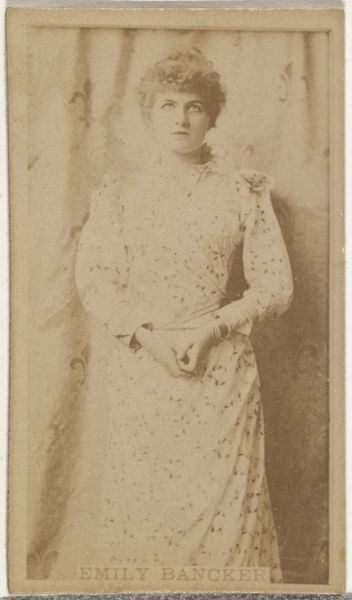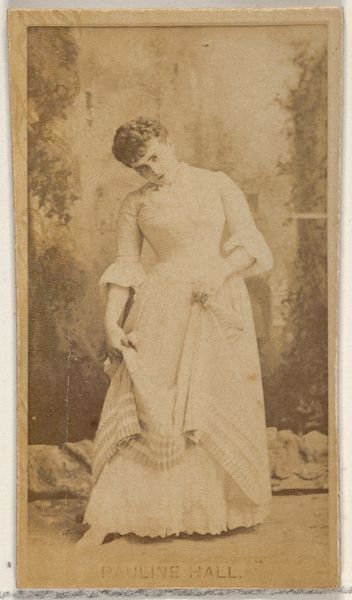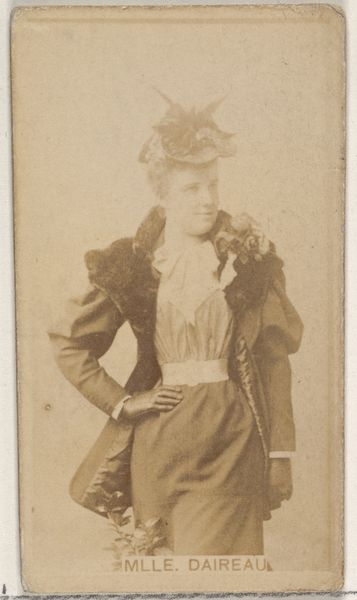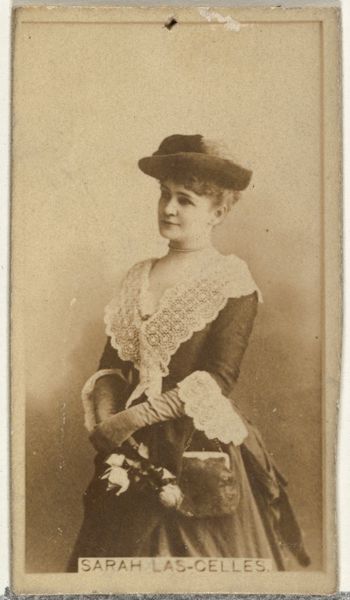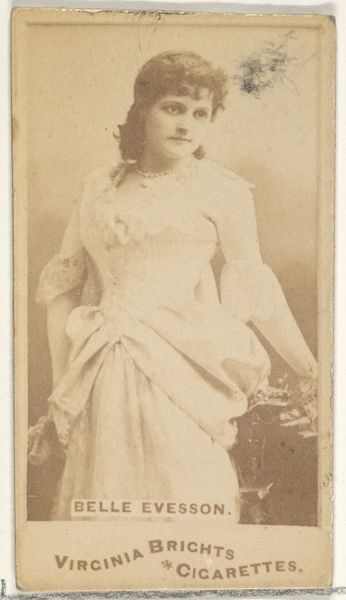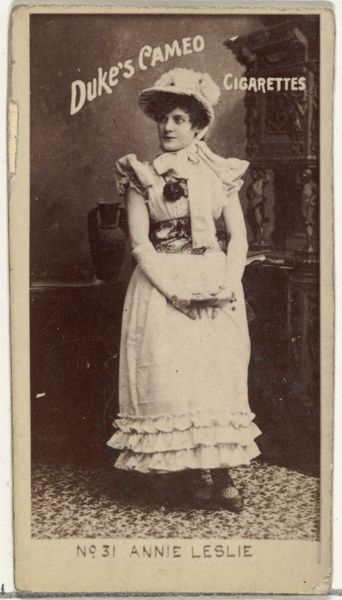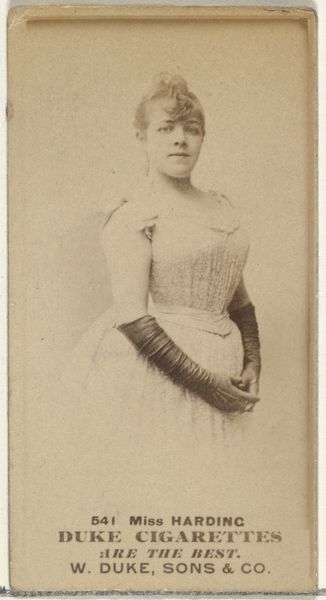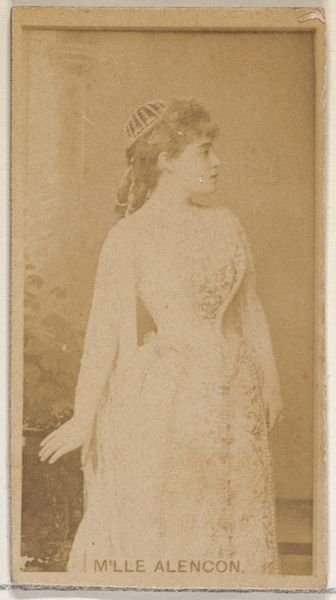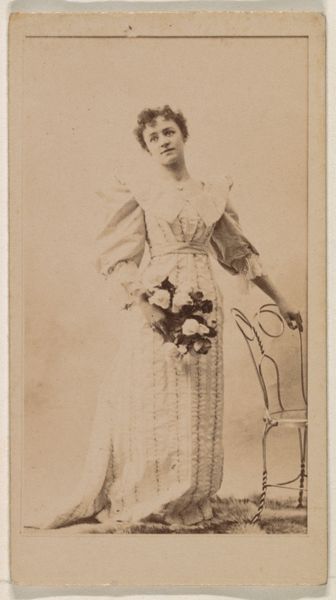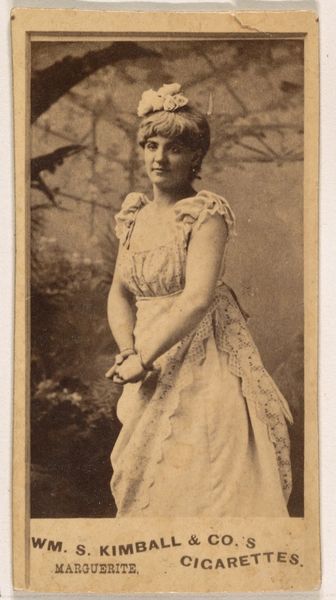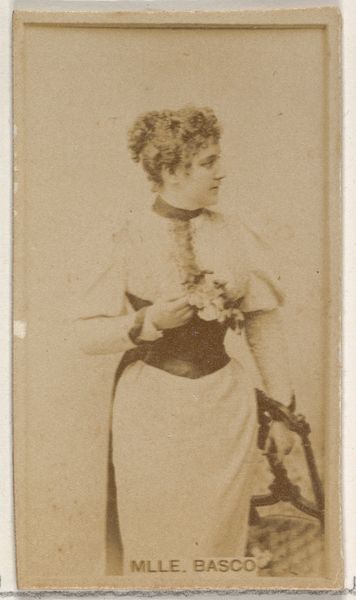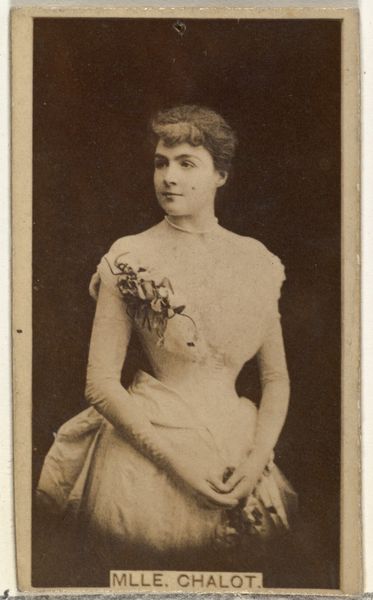
Card 868, Rose Coghlan, from the Actors and Actresses series (N45, Type 2) for Virginia Brights Cigarettes 1885 - 1891
0:00
0:00
drawing, print, c-print, photography
#
portrait
#
drawing
# print
#
c-print
#
photography
#
realism
Dimensions: Sheet: 2 3/4 x 1 3/8 in. (7 x 3.5 cm)
Copyright: Public Domain
Editor: This is a photograph from around 1885-1891, entitled “Card 868, Rose Coghlan, from the Actors and Actresses series (N45, Type 2) for Virginia Brights Cigarettes,” by Allen & Ginter. It's sepia-toned and depicts a stage actress, but has the distinct branding for a cigarette company. How do you interpret this work? Curator: It's a fascinating collision of worlds: celebrity, commerce, and performance all rolled into one. These cigarette cards were essentially early advertising, using the likeness of popular actresses like Rose Coghlan to sell tobacco. It speaks volumes about the social currency of actresses at the time, their images commodified to entice consumers. How might Coghlan have perceived this use of her image, especially given the limited control women had over their representation at the time? Editor: I never considered the power dynamics at play here. Curator: Exactly! This image offers us a lens through which we can examine the objectification of women, the burgeoning advertising industry, and the social status of actresses in the late 19th century. Coghlan is presented as both a subject of admiration and a marketing tool. Where do we draw the line? What ethical considerations arise when art or performance is directly linked to selling a potentially harmful product? Editor: So, the photo is more than just a portrait; it's a comment on society at that moment? Curator: Precisely. Think about the implications of associating an actress’s image with something addictive. The image then raises the question of the female body as a source of capital, a recurring theme we still see in advertising today. These seemingly simple photographs reveal deeper questions about agency, representation, and exploitation, which echo even today. Editor: That really reframes how I see these historical images. Thanks! Curator: Indeed. By critically examining these artifacts, we can become more aware of the subtle ways in which societal power dynamics are embedded in our visual culture, past and present.
Comments
No comments
Be the first to comment and join the conversation on the ultimate creative platform.
